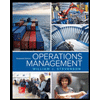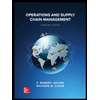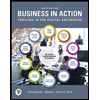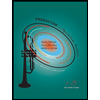QUESTION 6 (PRODUCT DESIGN: APPLICATION OF DECISION TREE TO PRODUCT DESIGN) A company manufactures specialty pollution-sensing devices for the offshore oil industry. One particular device has reached maturity, and the company is considering whether to replace it with a newer model. Technologies have not changed dramatically, so the new device would have similar functionality to the existing one, but would be smaller and lighter in weight. The firm's three choices are: keep the old model; design a replacement device with internal resources; and purchase a new design from a firm that is one of its suppliers. The market for these devices will be either "receptive" or "neutral" of the replacement model. The financial estimates are as follows: Keeping the old design will yield a profit of $6 million dollars. Designing the replacement internally will yield $10 million if the market is "receptive," but a $3 million loss if the market is "neutral." Acquiring the new design from the supplier will profit $4 million under "receptive," $1 million under "neutral." The company feels that the market has a 70 percent chance of being "receptive" and a 30 percent chance of being "neutral." Draw the appropriate decision tree. Calculate expected value for all courses of action. What action yields the highest expected value?
QUESTION 6 (PRODUCT DESIGN: APPLICATION OF DECISION TREE TO PRODUCT DESIGN) A company manufactures specialty pollution-sensing devices for the offshore oil industry. One particular device has reached maturity, and the company is considering whether to replace it with a newer model. Technologies have not changed dramatically, so the new device would have similar functionality to the existing one, but would be smaller and lighter in weight. The firm's three choices are: keep the old model; design a replacement device with internal resources; and purchase a new design from a firm that is one of its suppliers. The market for these devices will be either "receptive" or "neutral" of the replacement model. The financial estimates are as follows: Keeping the old design will yield a profit of $6 million dollars. Designing the replacement internally will yield $10 million if the market is "receptive," but a $3 million loss if the market is "neutral." Acquiring the new design from the supplier will profit $4 million under "receptive," $1 million under "neutral." The company feels that the market has a 70 percent chance of being "receptive" and a 30 percent chance of being "neutral." Draw the appropriate decision tree. Calculate expected value for all courses of action. What action yields the highest expected value?
Practical Management Science
6th Edition
ISBN:9781337406659
Author:WINSTON, Wayne L.
Publisher:WINSTON, Wayne L.
Chapter2: Introduction To Spreadsheet Modeling
Section: Chapter Questions
Problem 20P: Julie James is opening a lemonade stand. She believes the fixed cost per week of running the stand...
Related questions
Question
pdoduction and operation management

Transcribed Image Text:QUESTION 6 (PRODUCT DESIGN: APPLICATION OF DECISION TREE TO PRODUCT DESIGN)
A company manufactures specialty pollution-sensing devices for the offshore oil industry. One
particular device has reached maturity, and the company is considering whether to replace it with a
newer model. Technologies have not changed dramatically, so the new device would have similar
functionality to the existing one, but would be smaller and lighter in weight. The firm's three
choices are: keep the old model; design a replacement device with internal resources; and purchase
a new design from a firm that is one of its suppliers. The market for these devices will be either
"receptive" or "neutral" of the replacement model. The financial estimates are as follows: Keeping
the old design will yield a profit of $6 million dollars. Designing the replacement internally will
yield $10 million if the market is "receptive," but a $3 million loss if the market is "neutral."
Acquiring the new design from the supplier will profit $4 million under "receptive," $1 million
under "neutral." The company feels that the market has a 70 percent chance of being "receptive"
and a 30 percent chance of being "neutral." Draw the appropriate decision tree. Calculate expected
value for all courses of action. What action yields the highest expected value?
Expert Solution
This question has been solved!
Explore an expertly crafted, step-by-step solution for a thorough understanding of key concepts.
This is a popular solution!
Trending now
This is a popular solution!
Step by step
Solved in 2 steps with 3 images

Recommended textbooks for you

Practical Management Science
Operations Management
ISBN:
9781337406659
Author:
WINSTON, Wayne L.
Publisher:
Cengage,

Operations Management
Operations Management
ISBN:
9781259667473
Author:
William J Stevenson
Publisher:
McGraw-Hill Education

Operations and Supply Chain Management (Mcgraw-hi…
Operations Management
ISBN:
9781259666100
Author:
F. Robert Jacobs, Richard B Chase
Publisher:
McGraw-Hill Education

Practical Management Science
Operations Management
ISBN:
9781337406659
Author:
WINSTON, Wayne L.
Publisher:
Cengage,

Operations Management
Operations Management
ISBN:
9781259667473
Author:
William J Stevenson
Publisher:
McGraw-Hill Education

Operations and Supply Chain Management (Mcgraw-hi…
Operations Management
ISBN:
9781259666100
Author:
F. Robert Jacobs, Richard B Chase
Publisher:
McGraw-Hill Education


Purchasing and Supply Chain Management
Operations Management
ISBN:
9781285869681
Author:
Robert M. Monczka, Robert B. Handfield, Larry C. Giunipero, James L. Patterson
Publisher:
Cengage Learning

Production and Operations Analysis, Seventh Editi…
Operations Management
ISBN:
9781478623069
Author:
Steven Nahmias, Tava Lennon Olsen
Publisher:
Waveland Press, Inc.